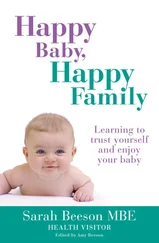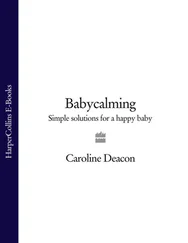Getting your baby to ‘latch’ …
Just as every baby is different, every latch is different, but here are some pointers to help you. If your baby keeps coming off the breast or she is uncomfortable, simply try putting her on again. It does take practice.
Positioning Make sure you are comfortable (see here) and that your baby’s mouth is level with your nipple. She should be close enough to reach the nipple without straining for it, with her head and body in a straight line.
Latching To encourage your baby to open her mouth nice and wide, touch your nipple to her lips and mouth so that she can taste the milk. Then as soon as she opens her mouth, move your baby’s head up and over the nipple, pushing as much of the areola in as possible. Free the bottom lip if it gets dragged in slightly to perfect the seal around the breast. The tip of the nipple should be deep inside her mouth or those strong little gums will hurt it. Don’t worry about your baby not being able to breathe whilst feeding. As long as you’re gently supporting her neck and shoulders and not clamping her head against your breast, she will pull away if she needs to. A good latch will mean your baby is positioned really closely against your breast.
Shaping Us mummies are all different shapes and sizes and babies only have little mouths, so you may have to forge out the perfect mouthful. To do this, hold your breast from underneath and use your thumb and fingers like pincers either side to squeeze the nipple and areola into a shape that’s easier for your baby to take.
Checking the latch If your baby is latched on correctly, after a few rapid sucks she should revert to slow, rhythmic sucking, which you can watch with great satisfaction if you look at her neck as she gulps the milk down.
Seeking help Once you get the latch right, you’ll never look back. If you are struggling, seek help from your health visitor or a breastfeeding organisation. Like I said before, breastfeeding is an art – sadly, so many women give up in those early months due to lack of advice.
Breastfeeding positions to try …
First, make sure you have plenty of cushions around you for comfort and support. Feeding can take a while, especially in these early days, so it’s important you have everything you need to hand.
Try to get your baby to empty one breast before offering the second. When she is really small, she probably won’t take the second, but if you’ve stuck to one breast, you can be more sure your baby has completed the milk cycle and taken all the nutrients she needs out of a feed. For the first few minutes on the breast your baby suckles foremilk, which is the thinner, thirst-quenching stuff, before she is hit with the fattier, richer hindmilk.

This is the classic breastfeeding image of a baby suckling at the breast. It’s great if you can make it work as it’s a relaxed and comfortable position for both of you that you can do anywhere without needing too many props! Just make sure you have a pillow under the arm the baby’s head is resting on.
I used the cradle hold with Chester, and when we were struggling to feed I was advised to sit in an upright chair, place my feet on a footstool and use a breastfeeding U-shaped pillow to support him. Apparently it’s the optimum feeding position and it definitely eased the strain on my back in those difficult days.

This is similar to the cradle hold but the baby’s head is supported by your hand rather than in the crook of your arm. It helps if you place a pillow across your lap.

This position is particularly good for feeding twins and for breastfeeding after a Caesarean as the baby doesn’t rest on your wound.

Lay your baby on the bed flat on the mattress and you do the same, positioning your nipple level with her mouth. You might have to lean in slightly. This is a relaxing position for both of you.
Lay your baby on her tummy vertically along your body. Make sure she’s properly latched on so she doesn’t drag on the nipple.
Expressing breast milk …
Expressing milk means extracting breast milk by hand or using a pump. The milk can be kept for a feed, so anyone can give it, not just you! Regular expressing is a great way to help establish your milk supply. Other good reasons to express:
• It frees you up to have a well-earned snooze.
• You might be struggling with feeding your baby directly from the breast, but still want to give her breast milk (and keep your supply up).
• Your baby might not be emptying the breast fully, so you need to express off the rest.
• You are suffering from a breast infection or engorged breasts and it’s too painful to feed directly.
I expressed in different ways, for different reasons and with varying regularity, for each of my babies. In all honesty I think you need to focus on getting your milk really established for the first three months, which means looking to feed or express every three to four hours, ideally. This might sound like an arduous task at a time when you’ve never been so tired, but after you’ve put the work in your milk will be there, and more often than not it won’t go away even if you want it to!
There’s a lot of talk about expressing between feeds to increase your milk supply and I think it certainly helps, particularly if you’re struggling with breastfeeding. If your baby is taking some milk from the breast but not emptying it, offer her a bottle of expressed milk if you have some stored – or formula – to top her up. And then express the rest of the breast to empty it fully. This way your milk will replenish and there will be plenty there for the next feed. If you are part bottle- and part breastfeeding, you might hear the term ‘nipple confusion’. Personally I think this is rubbish! If you get your baby used to anything early on and keep swapping from one thing to another, she will see it as normal, but you should consider all the facts for yourself and make your own decision about this.
Due to Chester’s reflux, I battled with breastfeeding for two and a half months until, eventually, I had to face the fact that breastfeeding was just not for him. He couldn’t get on with it and it wasn’t making him happy, which was stressing me out, which in turn was having an effect on my milk supply. I ended up expressing every feed for the next few months until I decided that expressing, on top of sterilising and feeding with two other children in tow, was just too much and it was time to hit the formula.
If, like me with Harry, you are successfully breastfeeding all your feeds, I don’t think you need to express in between, unless you want to express a bottle for your partner to give the baby so you can head to bed early and get a decent sleep! With all three of my children I expressed one of the night feeds for Dan to give so I could get to bed after the 7pm feed. But I would still wake up at around 11pm to express off that feed and save it for the following night, or else my breasts would have engorged or I’d have risked my milk not replenishing enough for the last night feed.
Читать дальше
















